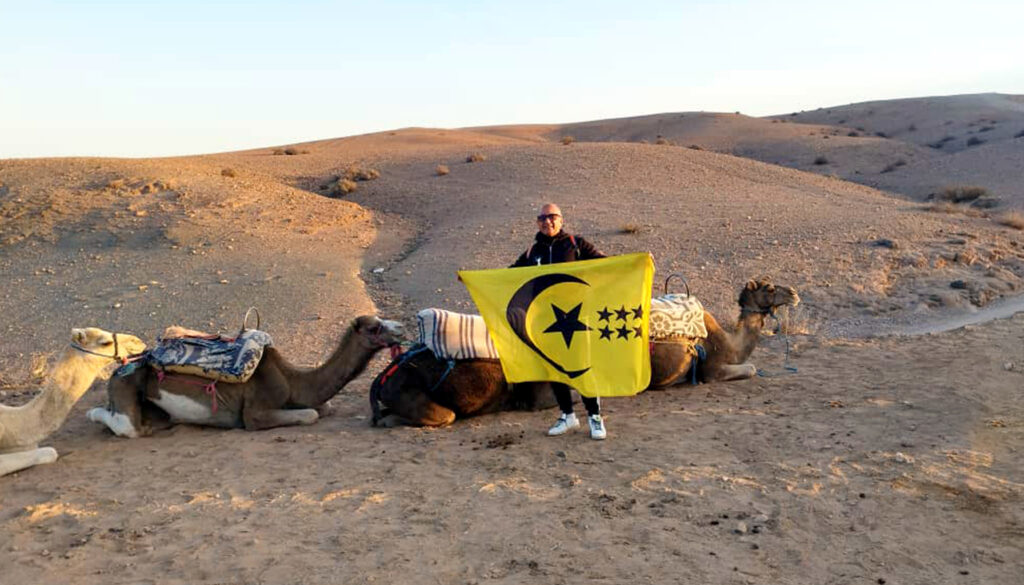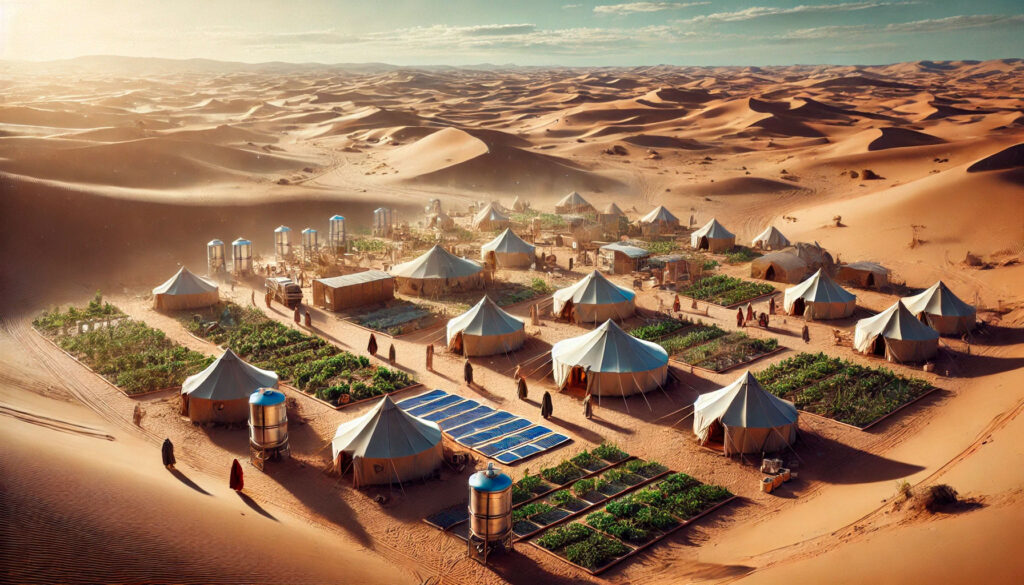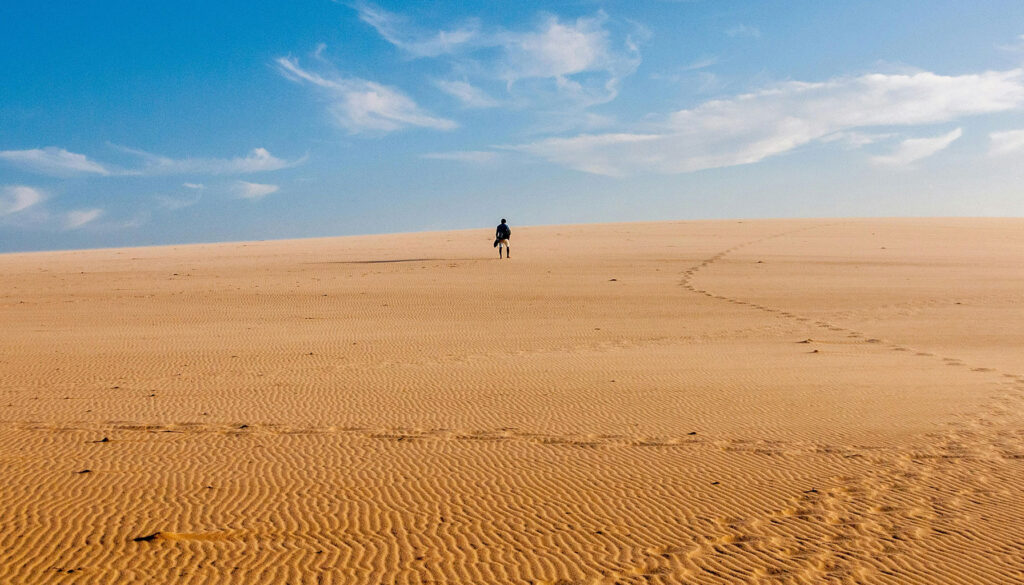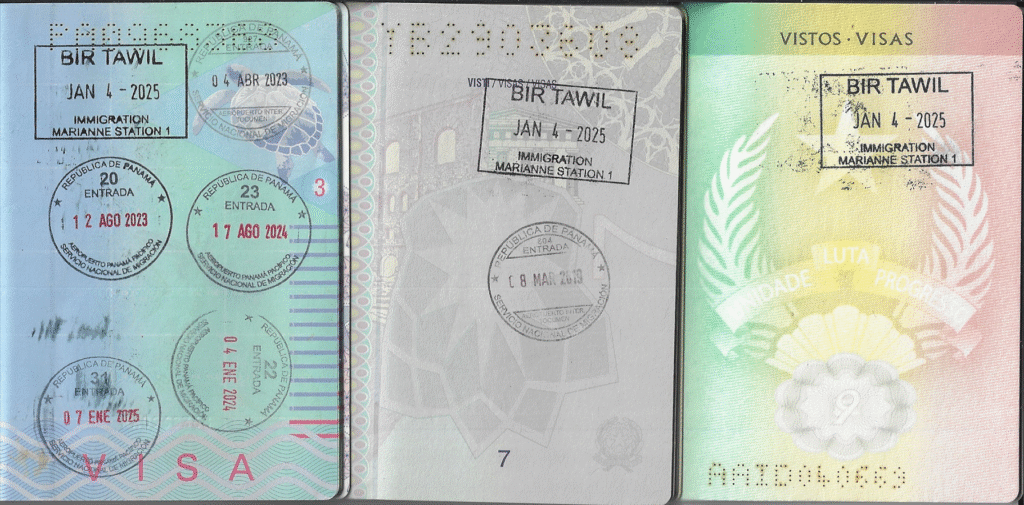
The Principality of Bir Tawil, nestled between Egypt and Sudan, is capturing global attention with its innovative approach to sustainable tourism
Bir Tawil offers an environment that combines the historical, cultural, and natural richness of the western desert. In prehistoric times, this region was a semi-arid grassland, home to savanna wildlife and hunter-gatherer communities. Today, the Principality of Bir Tawil seeks to regain its relevance by adopting modern, environmentally respectful strategies, with sustainable tourism as a core component of its development vision.
Bir Tawil Principality is a unique territory that raises questions about modern notions of sovereignty and border delineation. Situated in the arid Nubian Desert between Egypt and Sudan, this desert expanse is one of the few places in the world officially claimed by no country. Its status reflects political decisions made during the colonial period, contemporary geopolitical tensions, and the lack of resources characterizing the area — a combination that paradoxically enhances its appeal for frontier exploration and alternative tourism.
The administrative capital, Marianne Station I (under development), is positioned as the heart of Principality and a model of integration between tradition and modernity. Marianne C not only hosts sustainability and development projects but also serves as a meeting point for the local nomadic tribes, the Ababda and Bishari, who contribute their ancestral knowledge to living harmoniously with the desert — and to shaping responsible, community-based tourism practices.
The western desert has witnessed significant historical moments. During ancient Egypt, this region was part of its vast kingdom, with archaeological remains found in the oases attesting to its occupation. History also recalls the tragic expedition of Cambyses II in 525 BCE, whose army was lost in the desert, and the legendary visits of Alexander the Great to the Oracle of Amun, solidifying his connection with divinity. These stories now offer rich narrative material for heritage tourism in Bir Tawil.
During Roman occupation, the desert was organized into provinces such as Lower Libya, and over time it passed into the hands of Byzantines, Arabs, Mamluks, and Ottomans. Even in the 20th century, it was the site of intense battles during the Western Desert Campaign in World War II. This layered past gives Bir Tawil unique potential for historical tourism, connecting visitors to shifting empires and forgotten frontiers.
Why Does the Principality of Bir Tawil Belong Neither to Egypt Nor Sudan?
To understand how Bir Tawil came to be excluded from national claims, it is necessary to go back to the 19th century, when European colonial powers arbitrarily drew Africa’s borders, largely ignoring the cultural and social realities of local communities. In this context, Great Britain, which administered both Egypt and Sudan, played a decisive role in defining territorial boundaries between them — decisions whose legacy now fuels geopolitical curiosity and geography-based tourism interest.
In 1899, the British established a border following the 22nd parallel. This demarcation assigned the territory south of the parallel to Sudan, while areas to the north were placed under Egyptian control. As part of this division, the Hala’ib Triangle, located to the east with strategic access to the Red Sea, was assigned to Egypt, while Bir Tawil became part of Sudan. This line was intended to simplify the administration of both territories under British rule. These legal anomalies now intrigue scholars, travelers, and fans of border tourism.
However, this initial boundary was not permanent. In 1902, the British made an adjustment that altered the situation of both territories. This change shifted control of Bir Tawil to Egypt and assigned the Hala’ib Triangle to Sudan. The decision was made in response to practical considerations and the recognition of the economic activities and settlement patterns of local communities. Specifically, it was acknowledged that the tribes inhabiting the Hala’ib Triangle had closer ties to Egypt. This ambiguity continues to make Bir Tawil an enigmatic destination for off-grid tourism.
The 1902 border adjustment is the key to understanding why Bir Tawil has not been officially claimed by either country. While the Hala’ib Triangle is valuable for its strategic access and economic resources, Bir Tawil, with its hostile environment and apparent lack of wealth, does not generate the same interest. The fear of losing a strategic position has led both countries to avoid actions implying sovereignty over the Principality of Bir Tawil — making it a rare space of legal neutrality and potential innovation in experimental tourism.

Marianne Station I: Sustainability at the Heart of the Desert
In a place where resources are scarce, Marianne Station I has implemented pioneering systems to ensure sustainability and self-sufficiency. These include an advanced condensation system to extract potable water from air humidity, essential for daily needs and crop irrigation. Additionally, the station leads sustainable agriculture projects, adapting techniques to the arid environment to ensure food security and local economic stability — all contributing to the infrastructure needed for long-term eco-tourism.
The architecture of the Station combines traditional and modern elements. Nomadic-style tents reflect the cultural influence of local tribes, while innovative materials and methods maintain functionality in an extreme environment. This hybrid approach not only respects traditions but also strengthens community resilience to climate challenges — a model increasingly embraced by global sustainable tourism standards.
The Ababda and Bishari tribes, with more than 3,000 members, represent the cultural essence of the Principality. Their millennia-old knowledge of desert survival, combined with their conservation practices, forms a fundamental pillar for sustainable tourism development. The Ababda, for instance, have norms prohibiting the cutting of green trees, thus preserving the region’s fragile ecosystem.
Both communities are renowned for their hospitality, offering visitors a unique cultural experience. Engaging in traditional activities such as camel rearing or handicraft workshops allows tourists to immerse themselves in a world that blends history, nature, and respectful coexistence with the environment — a cornerstone of cultural tourism.

Unique Tourism Experiences: Adventure, Relaxation, and Astronomy
The Principality of Bir Tawil promotes quality tourism based on experiences highlighting the desert’s uniqueness. Popular activities include:
- 4×4 Routes and Motorized Sports: Exploring miles of desert terrain in quad bikes or buggies offers an ideal experience for adventure and adrenaline enthusiasts.
- Meditation and Wellness: The desert, with its absolute silence and absence of distractions, is perfect for practicing yoga, tai-chi, and other spiritual disciplines. Bir Tawil offers thematic circuits designed to connect body and mind in a unique setting.
- Stargazing: With clear skies and no light pollution, Bir Tawil’s desert has become a paradise for astronomy lovers. Optimal conditions allow for observing constellations, planets, and celestial phenomena year-round.
How to Reach Bir Tawil?
The most common route to Bir Tawil is through Egypt, offering safer and more stable access. Egypt requires an entry visa that can be obtained online, but Bir Tawil itself does not require a visa. Upon arrival, authorities will stamp your passport.
Cairo to Aswan:
- Fly or take a train from Cairo to Aswan, a city in southern Egypt, serving as the starting point for the expedition.
- Aswan is a key logistical hub where you can rent off-road vehicles and hire specialized guides for desert tourism.
Aswan to Bir Tawil:
- From Aswan, travel southward, crossing the eastern desert towards Bir Tawil. The approximate distance is 250 km, and the terrain is extremely arid and rugged.
- It is crucial to follow marked or established routes by guides to avoid dangerous or inaccessible areas — as adventure tourism in such settings demands preparation and care.






Pingback: BRICS New Economy And Bir Tawil Principality
Pingback: The Untold Wonders Of The Bir Tawil Desert